|
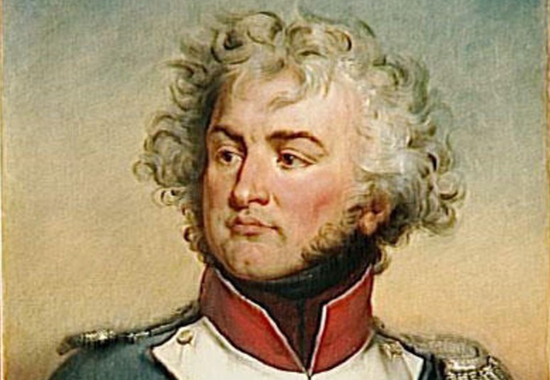
Jean-Baptiste Kléber 1753-1800
Proficient, Brave, Prudent, Dead at
47
Kleber was
born at Strasbourg on March 9, 1753, the son of a mason.
|
|
Image Above
Portrait of Jean-Baptiste Kleber,
Lieutenant-Colonel of the 4th Batallion of the
Upper Rhine in 1792
Detail from Paulin
Guerin's oil on canvas, 1834
Versailles |
Kléber in a Nutshell
Interestingly, Kleber started his military career in the
Austrian army.
By the end of his life, he had
become one of the most distinguished
French generals of the
 French
Revolutionary Wars. French
Revolutionary Wars.
And here is the France of Kleber's days on a map:
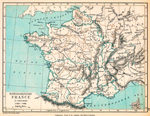
1769 - 1789 France
Click to enlarge
Jean-Baptiste Kléber's Career
Kleber joined the
Austrian army in 1776.
He returned to Alsace in 1783
and worked for a while as a building surveyor.
In 1792, and in consequence of the
 French Revolution,
Kleber signed up as a volunteer with the French
revolutionaries.
French Revolution,
Kleber signed up as a volunteer with the French
revolutionaries.
Kléber at Mainz
In October 1792, the French had
taken the city of Mainz (Mayence). From April to July 1793,
the Prussians and Austrians returned to take it back.
Lieutenant Colonel Kleber was one of the French soldiers who defended Mainz from
the besiegers.
The Siege of Mainz was part of
the
 War of the First Coalition,
by the way.
War of the First Coalition,
by the way.
Although the French had to evacuate the city
on July 22, 1793,
 General
Custine was impressed
by Kleber's performance, made him brigadier general in August
1793, and sent him to fight the Vendeans.
General
Custine was impressed
by Kleber's performance, made him brigadier general in August
1793, and sent him to fight the Vendeans.
Kléber at La Vendée
Vendée is a maritime department
in western France. The Vendeans took part in the
insurrection of 1793 against the Republic. As far as they
were concerned, being Roman Catholic and having an emperor
was just fine. The French revolutionaries begged to differ.
These were the
 Wars of the Vendee and
Jean-Baptiste Kléber was sent to help straighten things out
in favor of the revolutionaries.
Wars of the Vendee and
Jean-Baptiste Kléber was sent to help straighten things out
in favor of the revolutionaries.
He fought — and won — the
 Battle of Cholet
on October 17, 1793
Battle of Cholet
on October 17, 1793
 Battle of Le Mans
on December 12, 1793
Battle of Le Mans
on December 12, 1793
 Battle of Savenay
on December 23, 1793
Battle of Savenay
on December 23, 1793
Kléber at Fleurus
Together with
Jean-Baptiste Jourdan,
Kleber led his team to the important victory at the
 Battle
of Fleurus, which was fought on June 26,
1794. This battle was part of the Battle
of Fleurus, which was fought on June 26,
1794. This battle was part of the
 War of the First Coalition.
War of the First Coalition.
Kléber in Egypt
Napoleon was ready to take on
the
 Ottoman Empire, to
damage British trade connections, and to sprinkle a little
education and culture in the name of France while at it.
Ottoman Empire, to
damage British trade connections, and to sprinkle a little
education and culture in the name of France while at it.
To this end, he assembled a
squad that would fight and accompany his Egypt
Campaign. Napoleon and his army left
Toulon in May 1798, and arrived at Abu Qir on July 1, 1798.
His men would stay in Egypt until 1801.
Back to Kleber.
Kleber was wounded while fighting at
Alexandria in July 1798.
On April 16, 1799, he won the
Battle of Mount Tabor, or Thabor.
On August 22, 1799, Napoleon
was on his way back to France and left Kleber on location as
commander-in-chief.
On March 20, 1800, Kleber won the
Battle of Heliopolis. Here is the picture:
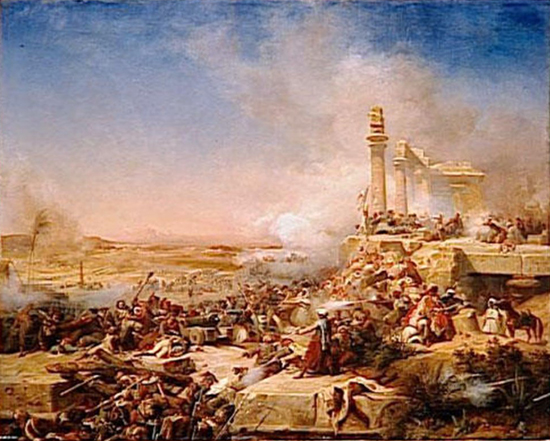
Battle of
Heliopolis, 1800
Oil on canvas Leon
Cogniet / Karl Girardet
Versailles
On April 21, 1800, Kleber took
Cairo again.
Kléber's Death
On June 14, 1800, at Cairo, Kleber was killed by
Sulayman
al-Halabi, a hired dagger from Syria. Here is the picture:
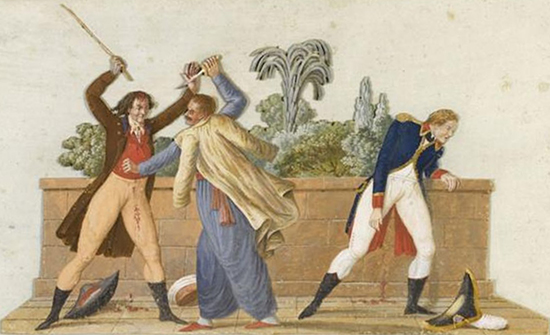
Assassination
of General Kleber, Commander of the Army in Egypt
Left to right: Architect Jean-Constantin
Protain, Assassin Sulayman al-Halabi,
and General Jean-Baptiste
Kleber. Protain was wounded but survived.
Kleber died within minutes.
Gouache on cardboard by
Jean-Baptiste Lesueur
Musée Carnavalet, Paris
And here is the
 Assassinations in History
archive.
Assassinations in History
archive.
Jacques
Menou became Kleber's successor in Egypt.
Who Was Sulayman al-Halabi?
Sulayman al-Halabi, also spelled
Sulaiman, Soleyman, Soliman, or
anything similar, was a young Muslim in his early twenties
from Aleppo, Syria.
In May 1800, he traveled to
Cairo for the hit. Apparently, it was his first job in this
line of work, and it would be his last one.
Sulayman was captured by the
French, tortured, and impaled.
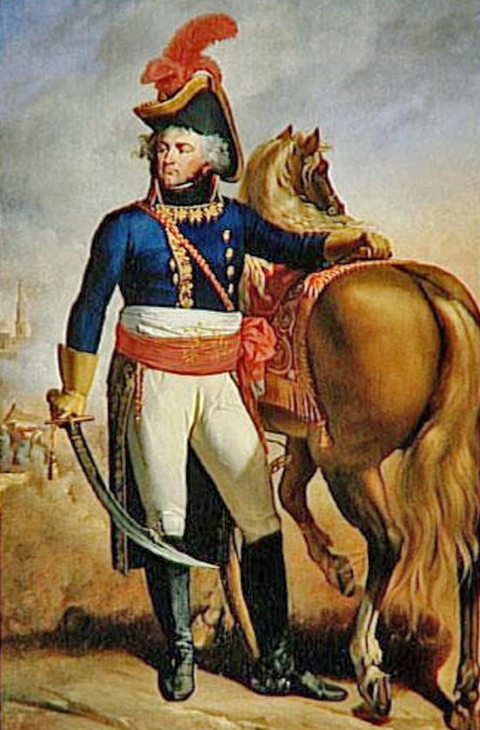
Jean-Baptiste Kléber,
Général en Chef de l'Armée D'Orient
Oil on canvas by
Antoine Ansiaux
Versailles
More History
|